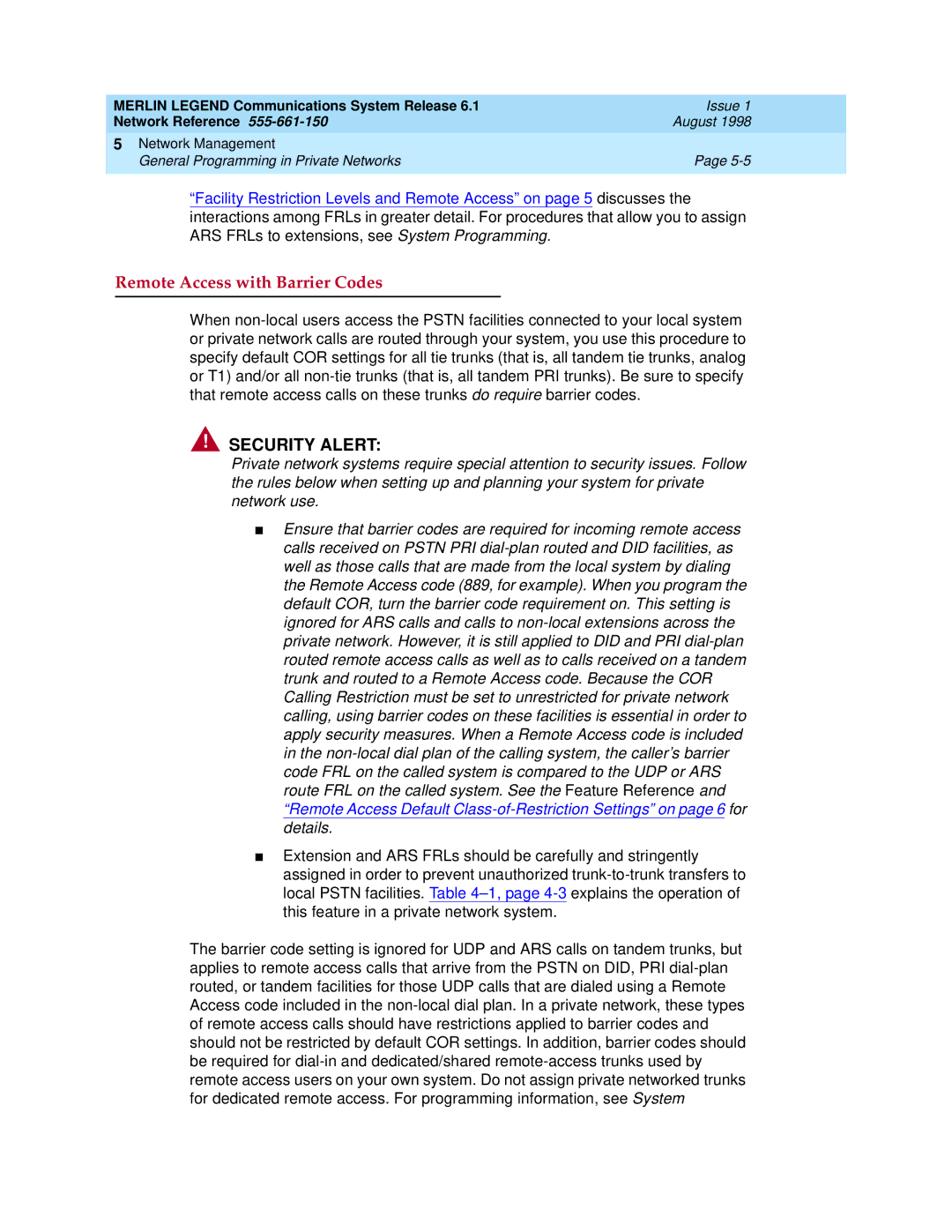| Issue 1 |
Network Reference 555-661-150 | August 1998 |
5 Network Management | |
General Programming in Private Networks | Page 5-5 |
| |
“Facility Restriction Levels and Remote Access” on page 5 discusses the interactions among FRLs in greater detail. For procedures that allow you to assign ARS FRLs to extensions, see System Programming.
Remote Access with Barrier Codes | 5 |
When non-local users access the PSTN facilities connected to your local system or private network calls are routed through your system, you use this procedure to specify default COR settings for all tie trunks (that is, all tandem tie trunks, analog or T1) and/or all non-tie trunks (that is, all tandem PRI trunks). Be sure to specify that remote access calls on these trunks do require barrier codes.
!SECURITYlALERT:
Private network systems require special attention to security issues. Follow the rules below when setting up and planning your system for private network use.
■Ensure that barrier codes are required for incoming remote access calls received on PSTN PRI dial-plan routed and DID facilities, as well as those calls that are made from the local system by dialing the Remote Access code (889, for example). When you program the default COR, turn the barrier code requirement on. This setting is ignored for ARS calls and calls to non-local extensions across the private network. However, it is still applied to DID and PRI dial-plan routed remote access calls as well as to calls received on a tandem trunk and routed to a Remote Access code. Because the COR Calling Restriction must be set to unrestricted for private network calling, using barrier codes on these facilities is essential in order to apply security measures. When a Remote Access code is included in the non-local dial plan of the calling system, the caller’s barrier code FRL on the called system is compared to the UDP or ARS route FRL on the called system. See the Feature Reference and “Remote Access Default Class-of-Restriction Settings” on page 6 for details.
■Extension and ARS FRLs should be carefully and stringently assigned in order to prevent unauthorized trunk-to-trunk transfers to local PSTN facilities. Table 4–1, page 4-3 explains the operation of this feature in a private network system.
The barrier code setting is ignored for UDP and ARS calls on tandem trunks, but applies to remote access calls that arrive from the PSTN on DID, PRI dial-plan routed, or tandem facilities for those UDP calls that are dialed using a Remote Access code included in the non-local dial plan. In a private network, these types of remote access calls should have restrictions applied to barrier codes and should not be restricted by default COR settings. In addition, barrier codes should be required for dial-in and dedicated/shared remote-access trunks used by remote access users on your own system. Do not assign private networked trunks for dedicated remote access. For programming information, see System
